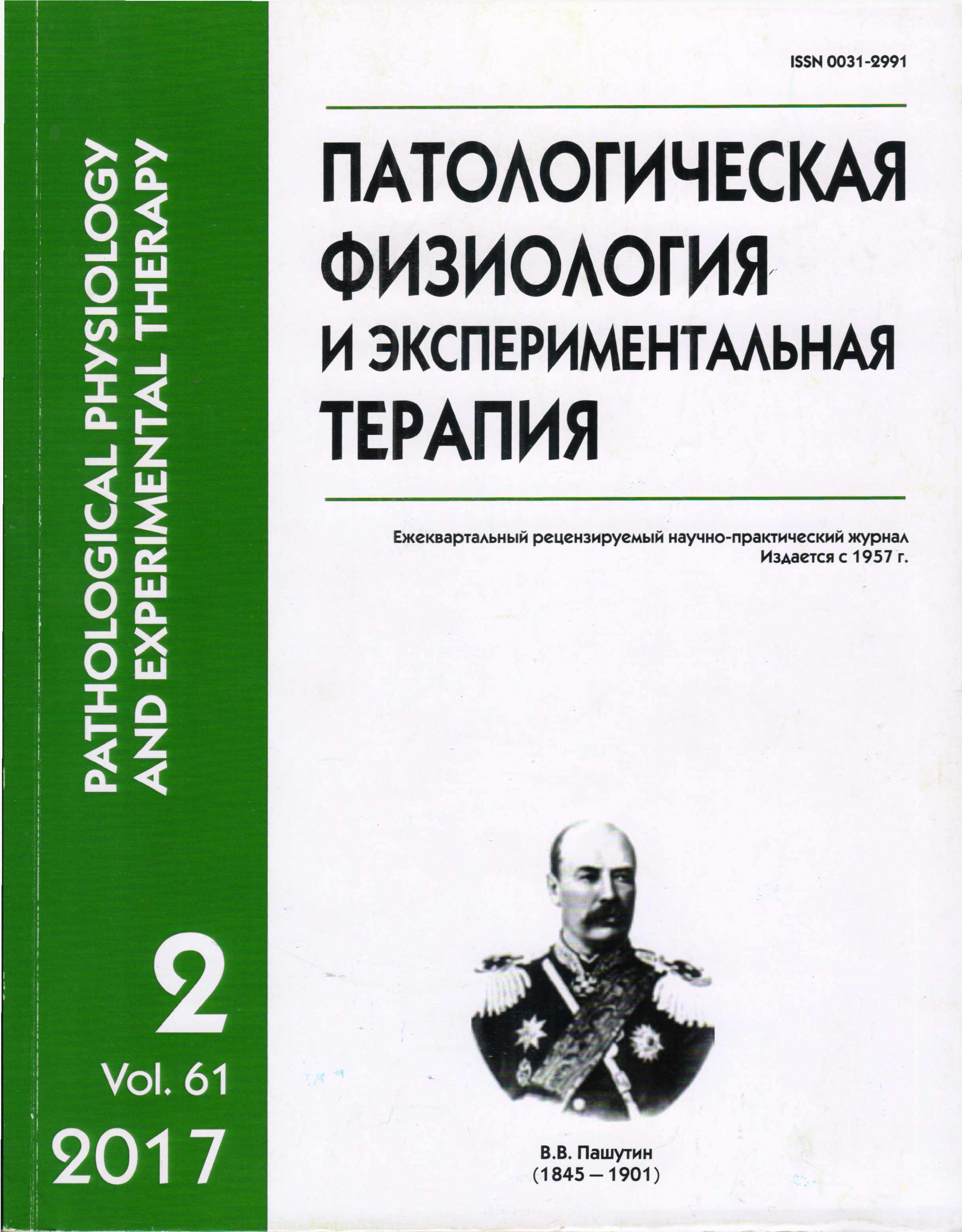Exposure to toxic dose of adrenaline on the functional state of the liver
Abstract
The purpose. The blood biochemical parameters characterizing the functional state of the liver, and the morphological profile of the body after a single exposure to a toxic dose of adrenaline were studied. Methods. Studies were conducted on 60 adult rats (female) weighing 0.15—0.2 kg, were divided into groups: intact animals; experience — animals, injected with epinephrine hydrochloride intraperitoneally in a dose of 0.5 mg/kg. All kinds of Biological material (blood, liver) were collected out through one and ten days after the start of the experiment. The degree of influence of high doses of epinephrine were evaluated in terms of lipid peroxidation (LPO) and protein (PSP) in liver homogenates, the concentration of average weight molecules (MSM), the activity of ALT, AST, alkaline phosphatase, LDH, total protein concentration, glucose and lactate in the blood plasma, as well as the determination of the prothrombin time (PTT) with the counting on the basis thereof of international normalized ratio (INR). Histology of the liver was studied by light microscopy. Results. It was found that throughout the experiment, there was an increased concentration of lipid peroxidation products and protein in liver homogenates, there was an increase in the concentration of MSM 1.7. Twenty-four hours after the administration of a toxic dose of adrenaline observed hyperenzymemia that manifested an increase in the activity of ALT and AST, was an increase in LDH. After 10-day five after the start of the experiment established the presence hyperenzymemia activity decreased ALT and AST, LDH activity remained elevated. total protein level was higher than in the group of animals in which investigations were conducted one day after the start of the experiment, PTV also continued to decline. In histological sections of the development of a pathological condition characterized by circulatory disturbance — plasmatization, both in central and in small vessels. From the hepatocytes both in the center and the periphery had changes granular dystrophy type, to some extent vacuolar. Conclusion. The results obtained testify that adrenaline in toxic doses, provokes the appearance catatoxic effect, characterized by activation of the oxidative status in the liver, which leads to morphological changes in body tissue, hyperenzymemia, offset metabolic homeostasis towards catabolism.






